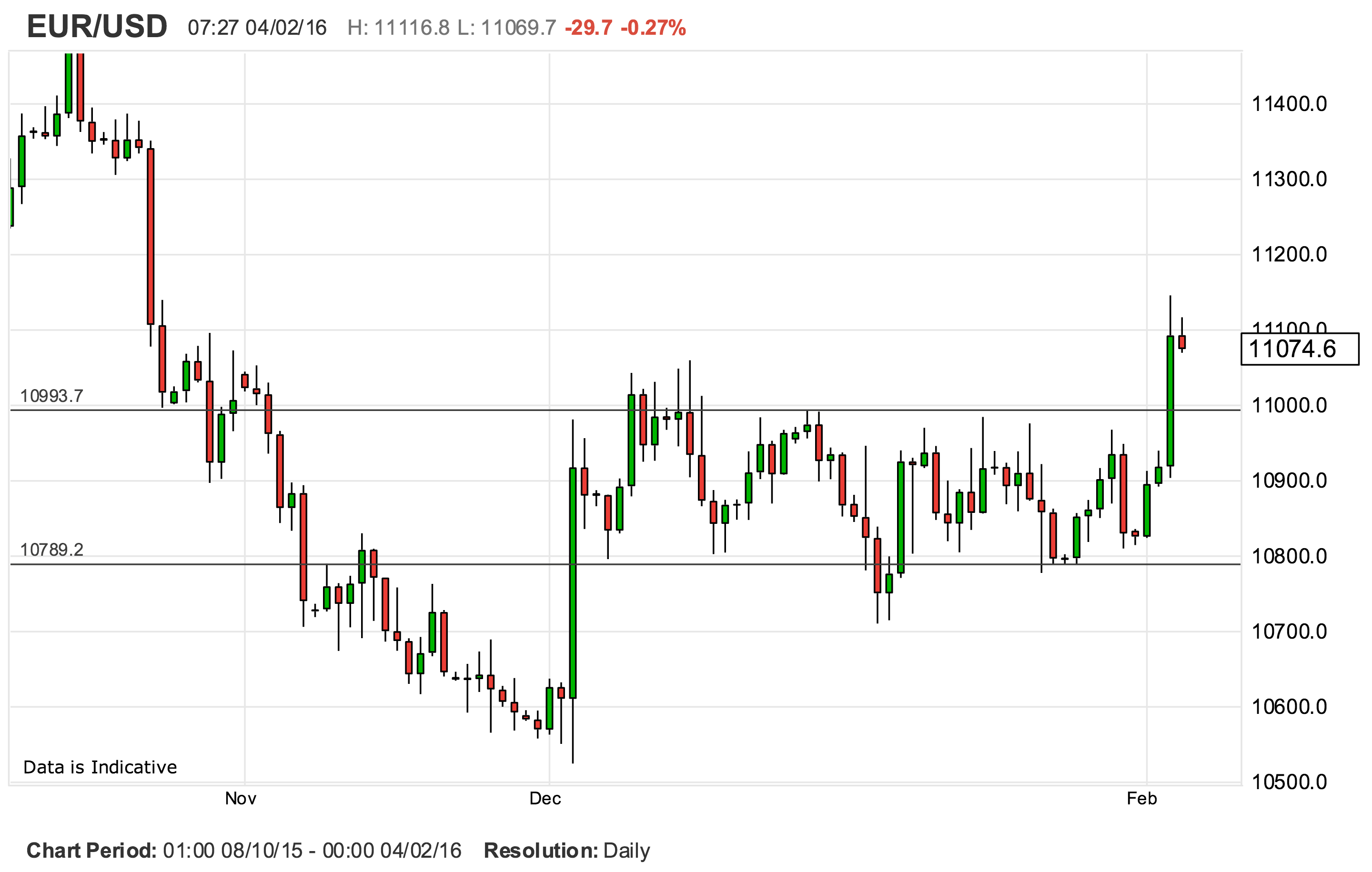EUR/USD Break Higher Forces Big-Name Banks out of Short EURUSD Trades
- Written by: Gary Howes
The sharp rally in the euro to dollar exchange rate has seen a clean-out of speculative positions as some high-level strategists are stopped out the market.

The euro has managed to pop out of the range it has traded against the US dollar over recent weeks.
The resistances around 1.1050 (December highs and 200D MAV) was convincingly broken in response to falling interest rate hike speculation in the US.
1.10-1.1050 represents the top of a range that has allowed speculative traders to form a reliable and therefore profitable trading strategy of late.
The strategy is simple - start selling the euro around the 1.0950 marker with stop-losses placed just beyond 1.10. The thinking is that the pair will revert to historical form and decline back towards 1.08 from where it is bought ahead of the next rebound.
As the charts show, the strategy is a reasonable one:

The problem for speculators of course is that when there is a little more impetus behind the up-move than anticipated the move can quickly spiral.
Why? Because there are so many stop-losses positioned just beyond 1.10 that the supply of dollars at this level simply explodes and the rate runs higher at a faster pace.
This is exactly what happened on Wednesday the 3rd. Here are some examples of big-name strategies that were closed:
BNP Paribas stopped out EUR/USD Short at a stop-loss placed around 1.1005 from an entry at 1.083.
Deutsche Bank stopped out of EUR/USD Short from 1.082 at a stop-loss at 1.11.
JP Morgan stopped out of EUR/USD Short from 1.0923 at a stop-loss set around 1.113.
“There has been a significant impact on the chart as the outlook has completely changed. The consolidation phase that has lasted all of two months is now over. There was a huge run through all of the key resistance levels, but perhaps the most meaningful is the old key pivot at $1.1050 which was smashed,” says Richard Perry at Hantec Markets.
The Outlook From Here: Beware the ECB
The outlook suggests that the euro will run until the next cluster of orders. Again, there is a range that can be identified which should contain the euro to dollar exchange rate.
In the longer term, the technical structure favours a bearish bias as long as resistance holds.
Key resistance is located region at 1.1453 (range high) and 1.1640 (11/11/2005 low) is likely to cap any price appreciation.
The current technical deteriorations favours a gradual decline towards the support at 1.0504 (21/03/2003 low).
“What is noticeable from a longer-term perspective is that the euro has been hovering between 1.05 and 1.15 for a year. A recovery within this range cannot be ruled out as technical indicators are supportive now. Our favoured trading range: 1.1050 - 1.1215,” says Ralf Umlauf at Helaba Bank in Frankfurt.
There is also the argument to be made that the move higher in the euro exchange rate complex of late will not sit well with the decision-makers at the European Central Bank.
The ECB wants a weaker euro to keep German exports supported, and the pricier currency will therefore be of concern.
The risks that the next ECB meeting is aggressively bearish is therefore growing.
“EUR/USD strength makes a stronger ECB response more likely in March. We tend to think this current EUR/USD rally presents another selling opportunity,” says Chris Turner at ING.




